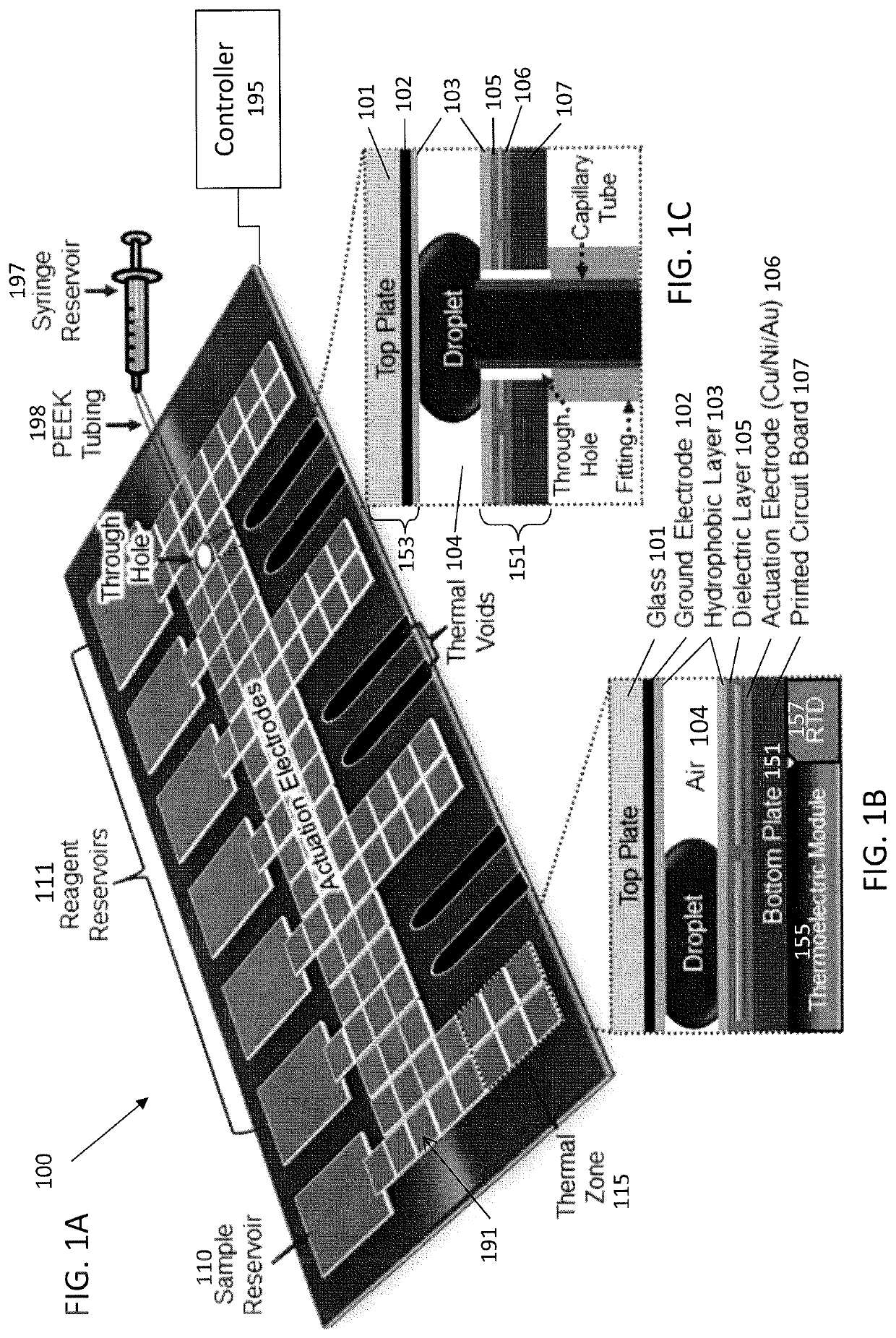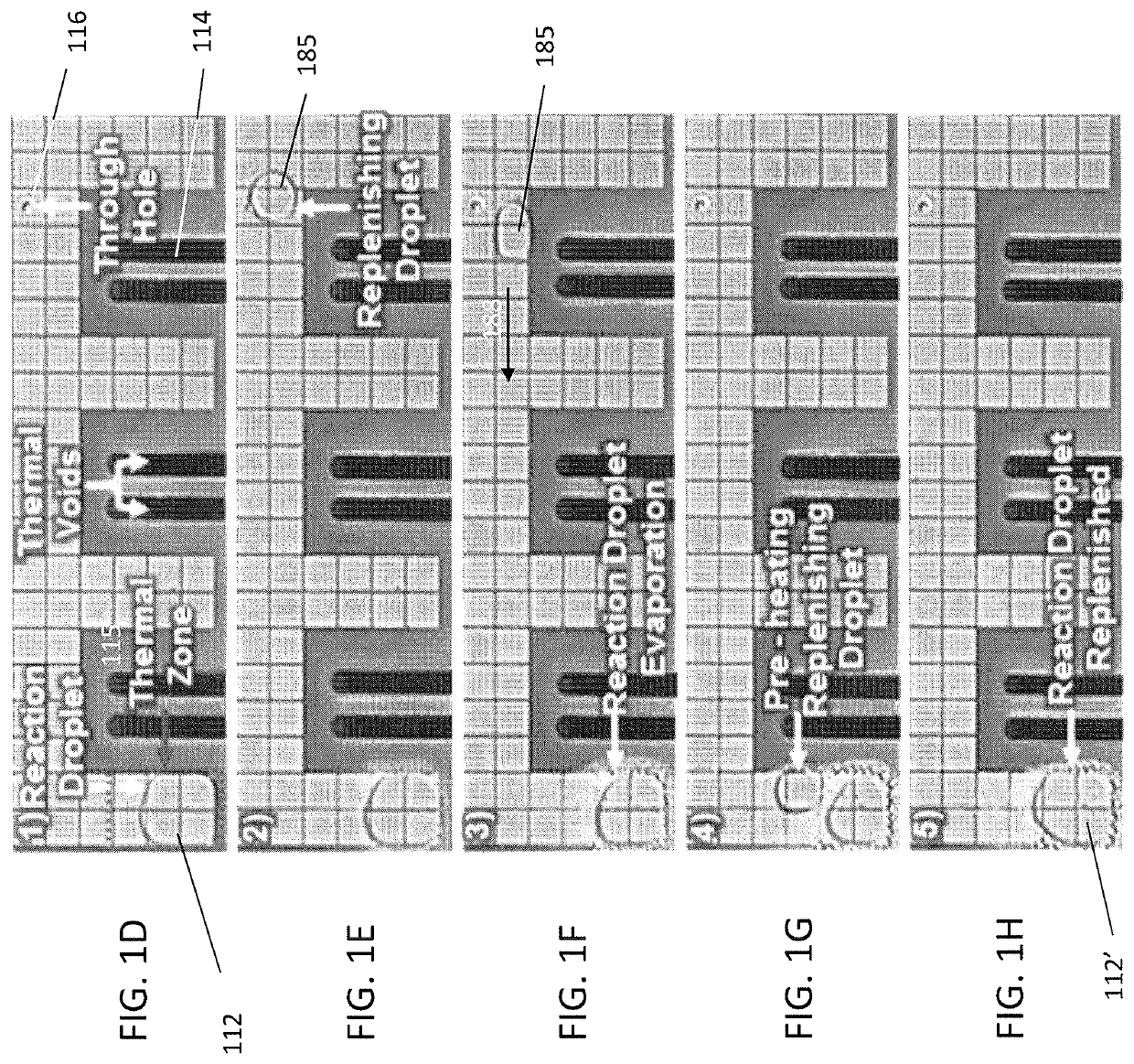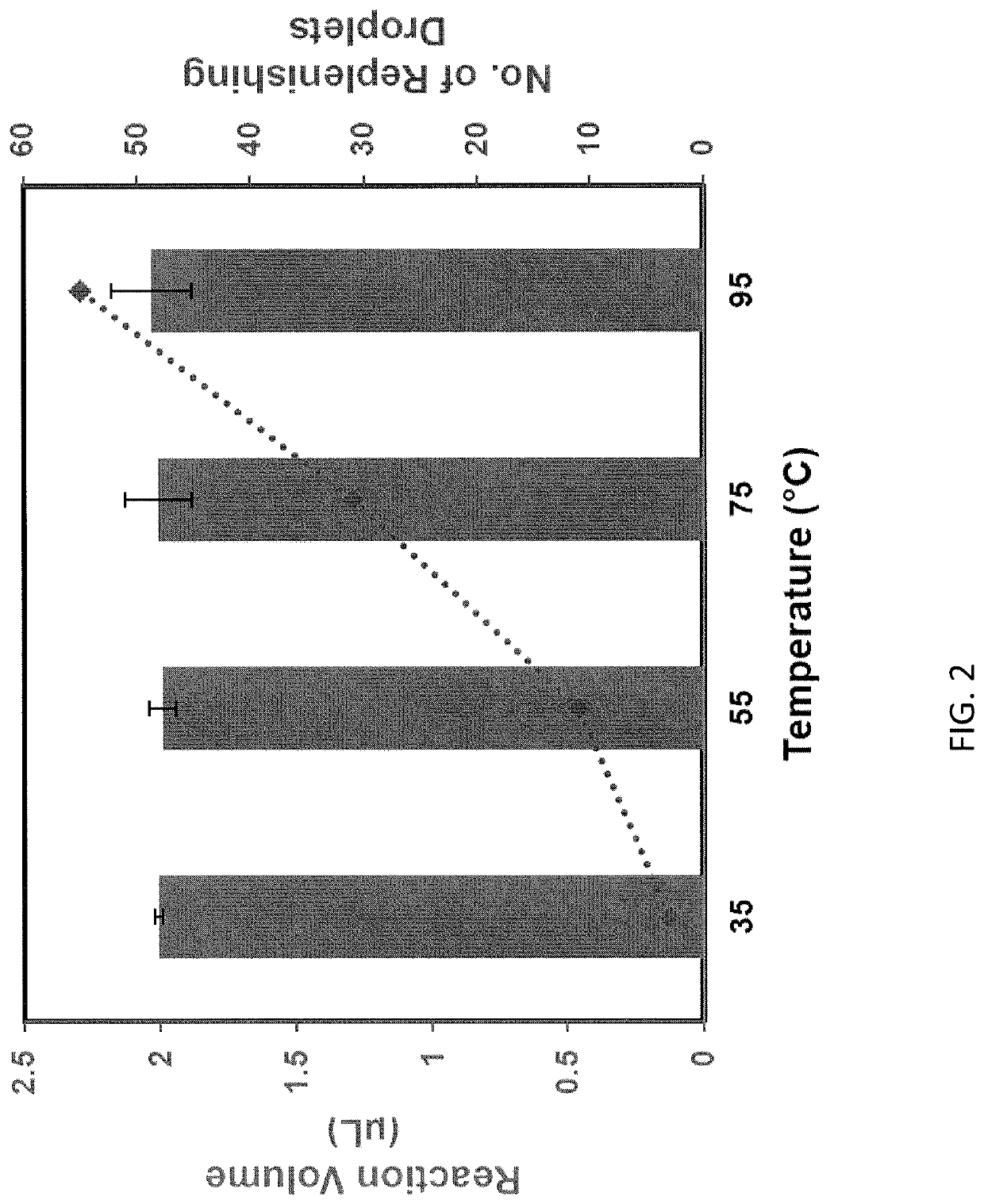Evaporation management in digital microfluidic devices
a microfluidic device and digital microfluidic technology, applied in the field of digital microfluidic devices, can solve the problems of increasing the cost and complexity of the microfluidic device, limiting the utility of air-matrix dmf, and evaporation frequently limiting the utility of the air-matrix dmf, so as to achieve the effect of reducing evaporation
- Summary
- Abstract
- Description
- Claims
- Application Information
AI Technical Summary
Benefits of technology
Problems solved by technology
Method used
Image
Examples
example 1
RNA Extraction
[0088]For extraction of total RNA from human PBMC, 5-10×106 cells were centrifuged at 1,000 rpm at 4° C. for 5 min, and re-suspended in 1 ml of RNAzol (Molecular Research Center; Cincinnati, Ohio), followed by dilution with 400 μl of water. After incubation at room temperature (RT) for 15 min, the samples were centrifuged at 16,000 rpm at 4° C. for 15 min, and ˜800 μl of the aqueous phase from each tube were transferred to a new 2-ml tube and mixed 1:1 with ethanol. Purified total RNA was recovered using the Direct-zol kit (Zymo Research; Irvine, Calif.), following the manufacturer's instructions and eluting in 10 μL of water. RNA yield was quantified using a Qubit 2.0 fluorimeter (Life Technologies; Carlsbad, Calif.), and fragment size distribution was assessed using a 2100 Bioanalyzer equipped with an RNA Nano 6000 Chip (Agilent; Santa Clara, Calif.). RNA samples were stored at −80° C.
example 2
RNA Fragmentation
[0089]DMF-mediated RNA fragmentation was implemented in three steps. First, three droplets (0.5 μL each) containing 180 ng / μL of human PBMC total RNA (270 ng RNA final) and a droplet (0.5 μL) of diluted 10×NEBNext fragmentation buffer (New England Biolabs; Ipswitch, Mass.) (4× final) were dispensed from their respective reservoirs, mixed on the DMF surface for 10 sec, and transported to a thermal zone. Second, the reaction droplet (2 μL; 270 ng RNA and 1× fragmentation buffer final) was incubated at 94° C. for 3 min. Finally, the reaction was cooled to 4° C., and RNA fragmentation was terminated by supplementing the reaction with a droplet (0.5 μL) of NEBNext stop solution (New England Biolabs; Ipswitch, Mass.). The reaction volume was maintained through addition of six replenishing droplets of nuclease-free distilled water (0.5 μL each) over the course of the experiment. For RNA fragmentation using the conventional benchscale method, processing was identical except...
example 3
cDNA Synthesis
[0090]First-strand cDNA synthesis was accomplished through DMF or benchscale implementation of the Peregrine method. For DMF-mediated cDNA synthesis, a five-step protocol was developed. First, a 0.5 μL droplet of fragmented human PBMC total RNA (100 ng) and a 0.5 μL droplet of primer PP_RT (25 mM) were dispensed from their respective reservoirs, merged and mixed on the DMF surface, and the 1 μL droplet transported to a thermal zone. Second, the droplet was incubated at 65° C. for 2 min, and then immediately cooled to 4° C. Third, three droplets of master mix [0.5 μL_each, containing 45% of SMARTScribe 5× First-Strand Buffer (Clontech; Mountain View, Calif.), 5.5% of 20 mM DTT, 22% of 10 mM dNTP mix, 5.5% of RiboGuard RNase inhibitor (Epicentre; Madison, Wis.) and 22% of SMARTScribe Reverse Transcriptase (Clontech; Mountain View, Calif.), as well as Pluronic F127 at 0.1% w / v) were dispensed onto the DMF surface, merged with the 1 μL droplet, and the reaction incubated a...
PUM
| Property | Measurement | Unit |
|---|---|---|
| temperatures | aaaaa | aaaaa |
| temperature | aaaaa | aaaaa |
| time | aaaaa | aaaaa |
Abstract
Description
Claims
Application Information
 Login to View More
Login to View More - R&D
- Intellectual Property
- Life Sciences
- Materials
- Tech Scout
- Unparalleled Data Quality
- Higher Quality Content
- 60% Fewer Hallucinations
Browse by: Latest US Patents, China's latest patents, Technical Efficacy Thesaurus, Application Domain, Technology Topic, Popular Technical Reports.
© 2025 PatSnap. All rights reserved.Legal|Privacy policy|Modern Slavery Act Transparency Statement|Sitemap|About US| Contact US: help@patsnap.com



